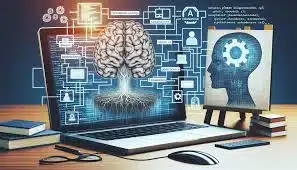- The Rise of Open Source AI
- What is Open Source AI?
- Benefits of Democratizing Innovation
- The Challenges Ahead
- The Future of Open Source AI
- Conclusion
The Rise of Open Source AI
In recent years, the field of artificial intelligence has witnessed a remarkable transformation, largely driven by the principles of open source. This movement has not only accelerated innovation but has also made cutting-edge technology accessible to a broader audience. Open source AI platforms allow researchers, developers, and businesses, regardless of their size, to harness the power of artificial intelligence without the prohibitive costs often associated with proprietary software.
What is Open Source AI?
Open source AI refers to artificial intelligence software and tools whose source code is made publicly available for anyone to inspect, modify, and distribute. This collaborative approach fosters a spirit of shared knowledge, encouraging creativity and facilitating the rapid development of innovative solutions. Projects like TensorFlow, PyTorch, and Hugging Face Transformers have exemplified how open source can drive advancements in machine learning and artificial intelligence.
Benefits of Democratizing Innovation
-
Accessibility: Traditional models often restrict access to those with substantial financial means, but open source AI enables startups, researchers, and even individual developers to utilize powerful AI tools. This accessibility can lead to groundbreaking solutions developed by underrepresented and small-scale contributors.
-
Collaboration: By enabling a wide range of contributors—from seasoned professionals to enthusiastic amateurs—open source projects thrive on diverse perspectives. This collaboration leads to more robust and innovative AI algorithms, as various stakeholders bring unique insights and experiences to the table.
-
Transparency: With open source AI, the algorithms and data used in machine learning can be scrutinized, which helps in identifying biases and ensuring ethical practices. This transparency builds trust among users and stakeholders, leading to safer and more responsible AI applications.
-
Rapid Iteration: The collaborative nature of open source facilitates quicker iterations and updates. As issues are identified and solved collectively, the speed at which improvements are made becomes significantly faster than in proprietary environments.
The Challenges Ahead
While open source AI presents numerous advantages, it also comes with its own set of challenges:
-
Quality Control: With many contributors working independently, ensuring the quality and reliability of contributions can be difficult. Rigorous vetting processes are necessary to maintain a high standard of output.
-
Sustainability: Many open source projects rely on the goodwill of volunteers and contributors; maintaining a steady flow of resources—both human and financial—can be tricky. Finding sustainable funding models has become imperative for the longevity of these initiatives.
-
Intellectual Property Issues: Navigating the murky waters of intellectual property rights can be challenging in an open source context. Clear policies and guidelines are essential to protect contributors while encouraging innovation.
The Future of Open Source AI
The future of open source AI looks promising. As industries increasingly recognize the value of democratized innovation, we are likely to see more partnerships between academia, businesses, and non-profits to foster open source initiatives. Furthermore, educational institutions may incorporate open source AI into their curricula, empowering the next generation of technologists to contribute to and benefit from this vibrant ecosystem.
Conclusion
Open source AI holds the potential to revolutionize how we think about and develop artificial intelligence technologies. By democratizing access and inviting collaboration, it paves the way for innovations that can solve pressing societal challenges. As we navigate the complexities of this evolving field, embracing open source principles will be key to driving forward the next wave of technological advancements, ensuring that AI serves humanity as a whole.
